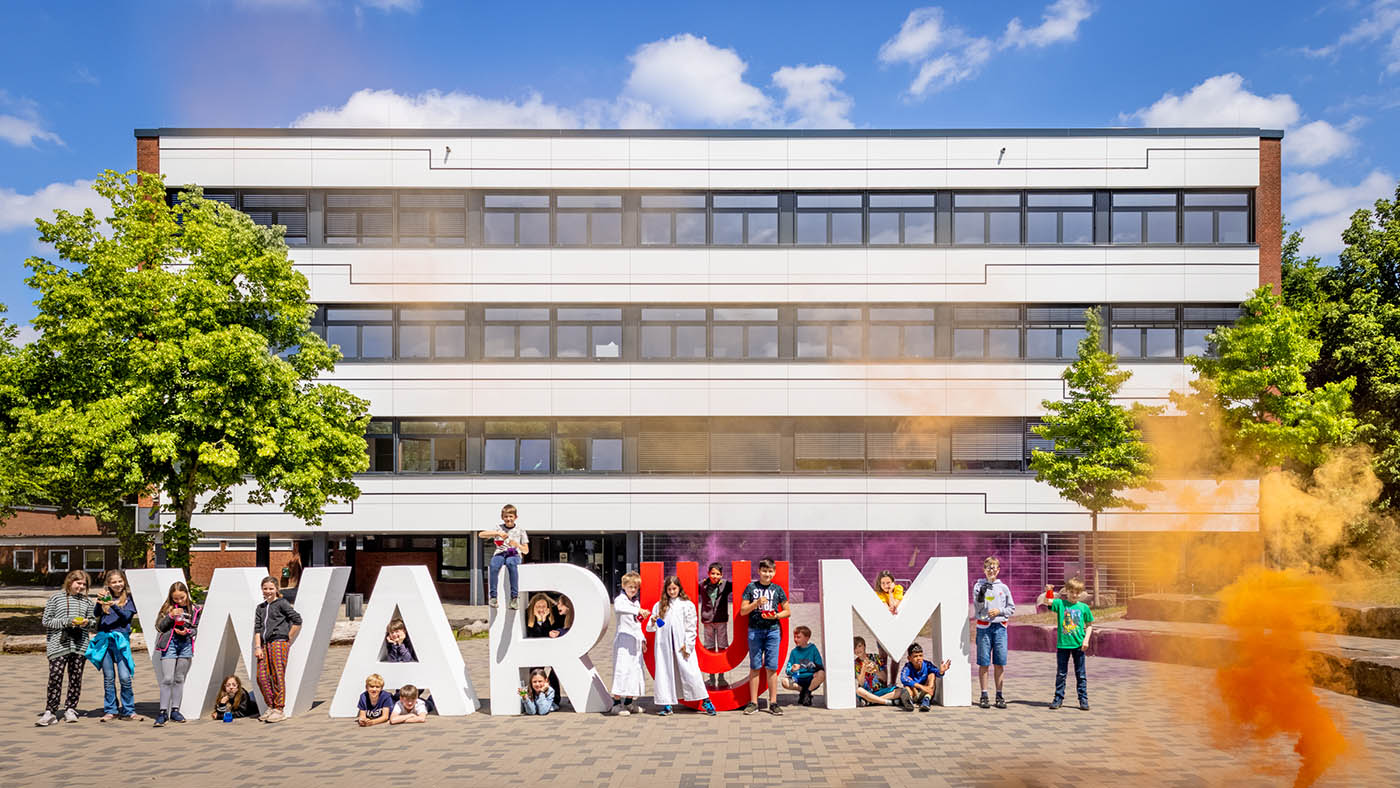
© GfG / Universität Bremen
How the University Motivates a School to Carry Out Research
50 years of the University of Bremen: The Wilhelm-Focke-Oberschule school in the Horn neighborhood is one of the locations of the “50 Reasons WHY” exhibition.
The University of Bremen is turning 50 this year, which is certainly a good opportunity to ask where you can find a piece of university across Bremen. That is what the statewide 50 Reasons WHY exhibition is showing at 50 exemplary locations. One of them is Wilhelm-Focke-Oberschule school in Horn. Find out where you can find a piece of the uni there and why the school team is so enthralled by the campaign.
The Wilhelm-Focke-Oberschule school has been connected to the University of Bremen for many years now: Since 2017, the school has had a so-called researcher class. From 2017 to 2020, the class was initiated and supervised as part of the Collaborative Research Center (CRC) “Colored States” by Professor Lutz Mädler and his colleague Claudia Sobich. CRCs are large, interdisciplinary research networks that receive funding from the German Research Foundation (DFG) over several years. The research class format was a part of this. Together with the teachers, scientists developed practically-oriented learning units on STEM topics and also taught together. The learning units tied in with the class’ teaching plan and allowed the children to explore the world of material sciences, mathematics, and computer science. The subjects German and Society and Politics were included in this type of research-based learning.
The School Now Has Three Researcher Classes
The class worked on the recycling of metals or the history of human civilization based on materials, for example. The concept also included regular university visits for the pupils so that they could work together with the researchers from the large research network that was being funded by the German Research Foundation. When the project came to a close at the end of 2020, the school hung on to the idea and created its own pedagogic concept. Now, the school has three classes that carry out research and call themselves researcher classes.
Thus, it’s clear why the school wanted to take part in the 50 Reasons WHY project. “We found the ‘why’ so interesting that we thought about what we could do with it,” explains the deputy head of the school Susanne Helm. The teachers had the idea of collecting research questions with the children and youths. “I am still amazed by what came together,” states the teacher. For example: Why do ants argue? What is normal? Where does the pandemic come from? Can you sneeze in your sleep? What happens after you die?
“The university should pat itself on the back for this campaign.”
The whole school then worked on some of the questions during a project day in June. The neighboring Marie Curie school - a primary school - joined in with the idea and immediately planned three project days. “The university should pat itself on the back for this campaign,” says Susanne Helm. “It has motived us and our children and youths to carry out research.”
You can find out more about the exhibition and the 50 reasons WHY location of the Wilhelm-Focke-Oberschule school here.